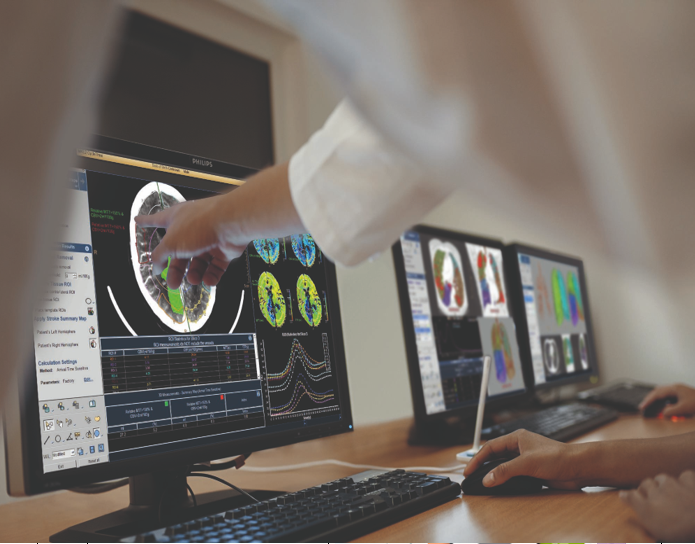

The software features an interface and educational content in Russian, Kazakh, and English. It includes interactive 3D content designed to enhance student engagement and make learning more effective. The software contains a multimedia library with 1,500 3D models, featuring natural landscapes, natural phenomena, animated human figures, animals, insects, minerals, geometric shapes, and physical and chemical elements. It is user-friendly for teachers and students of all ages.
The software is accessible online through the developer's official website by downloading an application on the user’s personal computer, along with a unique activation key. The software supports interactive displays, boards, personal computers, and smartphones. Integration with MS Office enables users to incorporate models into presentations and documents. Users can add notes to models, take screenshots for unlimited use in educational materials, switch between language versions, and display two languages simultaneously (Russian and English).
Features include a title and keyword search tool and augmented reality (AR) support, allowing each figure, object, gallery, and video to be viewed in AR using additional VR equipment. Users can zoom and rotate models in 3D for detailed viewing, highlight any part for a full display, and access over 1,500 interactive 3D models with detailed components. Each library object includes a brief description, transparent screenshot options, model integration with MS PowerPoint presentations, and options to share links, copy to the clipboard, or share through Google Classroom, MS Teams, and QR codes. Every model has a "blind map" function to test student knowledge.
The library menu is intuitively organized into ten categories:
1. Human Anatomy: Provides a detailed understanding of human body structure, organs, functions, and body systems. Content includes 3D models, videos, and macro shots. Subcategories include: Cell, Respiratory System, Endocrine System, Integumentary System, Lymphatic System, Nervous System, Body Systems, Cardiovascular System, Bones and Skeleton, Reproductive System, Sense Organs, Muscular System, Digestive System, Urinary System.
2. Animal Biology: Explores the diversity of animal life, structure, biological activity, distribution, and life cycles. Content includes 3D models, macro shots, videos, and species galleries. Subcategories: Bacteria, Protists, Sponges, Cnidarians, Flatworms, Rotifers, Roundworms (Nematodes), Mollusks, Annelids, Tardigrades, Arthropods, Echinoderms, Tunicates, Jawless Fish, Cartilaginous Fish, Bony Fish, Amphibians, Reptiles, Birds, Mammals.
3. Plant Biology: Provides insights into plant groups, structures, defining traits, diversity, and life cycles. Content includes 3D models, macro shots, and galleries. Subcategories: Plant Structure (Anatomy), Vascular Spore Plants (Pteridophytes), Gymnosperms, Monocots, Eudicots, Mosses, Fungi, Algae.
4. Paleontology: Offers theoretical knowledge on ancient animal species, including dinosaur skeleton structures based on archaeological data, divided by periods into Paleobotany and Paleozooology. Content includes 3D models and galleries. Subcategories: Triassic, Jurassic, Cretaceous periods, and a Period Gallery.
5. Physics: Covers fundamental laws of nature, matter, structure, motion, and transformation rules. Content includes 3D models with detailed explanations of physical laws, phenomena, mechanisms, and instruments. Subcategories: Mechanics, Molecular Physics and Thermodynamics, Electricity and Magnetism, Optics, Atomic and Nuclear Physics, How Things Work, Measuring Instruments, Energy Transformation, Historical Machines, Devices, and Experiments.
6. Chemistry: Explains substances, composition, structure, transformations, and chemical reactions, as well as governing laws and patterns. Content includes 3D models, macro shots, and videos. Subcategories: Periodic Table, General Chemistry, Organic Chemistry, Inorganic Chemistry, Biochemistry, Chemical Reactions - Video.
7. Geology: Covers Earth’s structure, composition, crust, and processes. Content includes 3D models and macro shots. Subcategories: Minerals, Rocks, Planet Earth.
8. Astronomy: Explores the position, movement, structure, origin, and evolution of celestial bodies and systems. Content includes 3D models and galleries, such as celestial bodies, the solar system, moon phases, planetary satellites, space devices, stations, and satellites.
9. Geometry: Provides knowledge on spatial relationships and shapes. Content includes 3D models, galleries, videos, and construction formulas. Subcategories: Shape Construction Examples, Plane Geometry, Solid Geometry, Paper Figures.
10. Culture: Includes 3D models of historical structures, architectural monument elements, and sculptures.
The software supports a user account feature, allowing users to add objects to favorites and create a personal model library. It operates with touchscreen controls on interactive displays, recognizing gestures like single/double tap, single/double two-finger tap, swipe, press and drag, and pinch-to-zoom.
The software supports platforms including Windows and Android and is downloadable from the Microsoft Store, displaying and functioning without distortion on interactive displays. All available models and animations are accurately organized within their respective category sections.
Please leave your message here! We will send detail technical info and quotation to you!